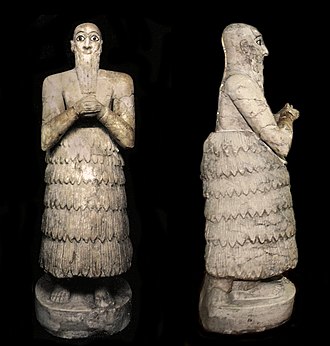
A kaunakes[1] (Ancient Greek: καυνάκης, romanized: kaunákēs or γαυνάκης; Classical Syriac: ܓܘܢܟܐ, romanized: gawnɘḵā;[2][3] Akkadian: 𒌆𒄖𒅘𒆪 TÚGGU-NAK-KU)[4][5] or persis was a woollen mantle associated with ancient Mesopotamia and Persia. It was woven in a tufted pattern suggesting overlapping petals or feathers, either by sewing tufts onto the garment or by weaving loops into the fabric.
- ^ Sometimes spelled kaunakès, as in French.
- ^ "Sedra". sedra.bethmardutho.org. Retrieved 23 February 2023.
- ^ "The Comprehensive Aramaic Lexicon". cal.huc.edu. Retrieved 23 February 2023.
- ^ http://translate.enacademic.com/γαυνάκης/el/[permanent dead link]
- ^ Chicago Assyrian Dictionary, Volume 5 (PDF). p. 134.